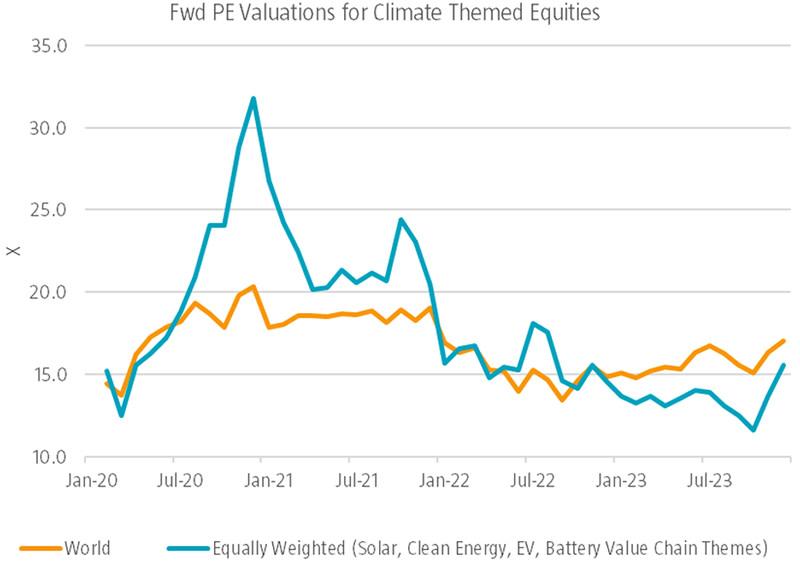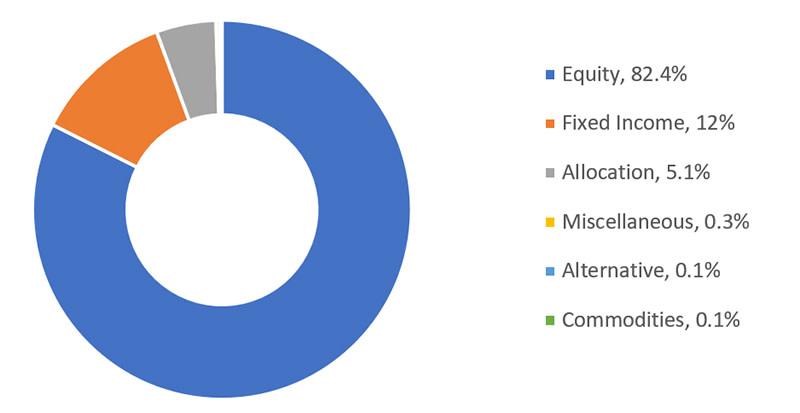Multi-asset opportunities in the climate transition era

Climate investing will be boosted over the next five years if the world honors the pledges made at COP28, says multi-asset investor Aliki Rouffiac.
- COP28 reinvigorates need to invest trillions in climate-related solutions
- Climate equities and bonds face a rosier year after a rollercoaster 2023
- Spectrum for investments is becoming wider but diversification is key
After a turbulent 2023, equities in climate-related themes have re-rated to become relatively cheaper than mainstream stocks while yields on green bonds are moving closer to traditional credits, making both asset classes more attractive than they were last year.
And the trillions needed in investment to come close to achieving net-zero carbon by 2050 to meet the Paris Agreement bodes well for renewable energy, carbon transition and other climate solutions, says Rouffiac, Portfolio Manager with Robeco Sustainable Multi-Asset Solutions.
“The COP28 summit has brought back into focus the need to accelerate the climate transition, with a number of pledges highlighting the importance of government policies and private financing,” she says.
“Although the long-awaited pledge of ‘phasing out’ fossil fuels was not achieved, ‘transitioning away from fossil fuels’ means that economies now have to beef up their plans to increase clean energy capacity for the years to come in order to meet this ambition.”
“In addition to increasing renewable energy capacity, committing to a more energy-efficient ecosystem, alongside the deployment of other technologies like nuclear and hydrogen, are solutions that have been acknowledged as being part of the opportunity set to facilitate the transition.”
Investment on a planetary scale
The scale of the investment needed is vast: renewable energy capacity will need to increase threefold by 2030, with much higher requirements in clean energy investments for developing countries, according to the Global Energy Transitions Stocktake (IEA). This has already sparked inflows into a growing number of climate-themed equity and corporate bond strategies, along with the burgeoning green bond market, as private capital is required to finance the transition to a greener economy.
“Despite 2023 being a challenging market environment for renewable stocks, investment into climate strategies has been growing, with assets under management (AuM) in climate assets surpassing the USD 500 billion mark in June 2023, according to Morningstar,”” Rouffiac says. Europe accounts for the lion’s share of these assets, with 84%, followed by China and the US.”
“It is also notable that climate transition and climate solutions strategies dominate the landscape, although differences in regional composition indicate that European investors are favoring climate transition and solutions type of funds, whereas in China and the US, the appetite for clean energy/tech strategies is stronger,” she says.
“As the spectrum of solutions spanning clean energy, energy efficiency and less-established technologies like hydrogen is becoming wider, the landscape for climate investing is expected to benefit from an increasing breadth in the universe.”
A rollercoaster year
Despite the enthusiasm, returns on clean energy investments in listed equities have seen their ups and downs, partly due to input price inflation and supply chain disruptions in the sector last year, making it more expensive to build capacity.
“Returns in 2023 across themes such as clean, wind and solar energy, electric vehicle driving technology and battery value-chains have ranged from -26% to +26%, highlighting the importance of diversification over shorter periods,” Rouffiac says.
“A challenging backdrop has meant that valuations have now adjusted, and prospects for future returns are brighter. Relative to global equities, an equally weighted basket of wind, solar, clean energy, EV and battery value chain themes is now trading at a 9% forward discount compared with the 5.5% post-Covid historical average premium.”

Climate-related equities are trading at a discount. Source: Bloomberg, December 2023.
“Price/earnings multiples for some of those themes and companies have already started to re-rate from the lows seen in October last year, with room for further re-rating as the interest rate cycle normalizes, and as business models adjust to the new macroeconomic state.”
Milestone for green bonds
The sustainable debt market, and in particular green bonds – which many companies use as a means of financing to transition away from traditional energy sources – has grown exponentially to exceed USD 2 trillion in the third quarter last year.
However, the ESG debt market still remains relatively small, and is only a fraction of the global fixed income market. Within the global climate strategy landscape, allocations to dedicated climate-related fixed income portfolios make up only 12% of these total assets in climate funds, as equity products dominate the climate universe, according to Morningstar.

Investments in climate-related strategies. Source: Morningstar.
Scope for growth
”So, there is scope for the fixed income asset class to grow, provided that issuance trends recover from their 2023 lows, and investors reassess their preferences in the space,” Rouffiac says. “Yields for green corporate bonds are now closer to those for conventional bonds, suggesting a diminishing ‘greenium’ due to last year’s more muted demand.”
Meanwhile, an alignment of regulatory initiatives with climate ambitions, and greater efforts to mobilize capital toward the less developed part of the world are required to accelerate the pace of investments needed to achieve the COP28 pledges, she says. But investors do need to diversify to spread the risks in what may be a recessionary year, in order to maximize their potential returns.
“As the spectrum of climate solutions is becoming wider, opportunities for private investors to participate in the climate transition is growing,” Rouffiac concludes. “However, diversification is key for navigating the challenges of higher rates and a less friendly macro environment in the short term.”
Sign Up Now for Full Access to Articles and Podcasts!
Unlock full access to our vast content library by registering as an institutional investor .
Create an accountAlready have an account ? Sign in
